|
Full moon rises over Lahaina, the moored cruisers, and the local tour boats. If you zoom in on the third catamaran from the right, you can almost see the dozens of tourists on deck.
|
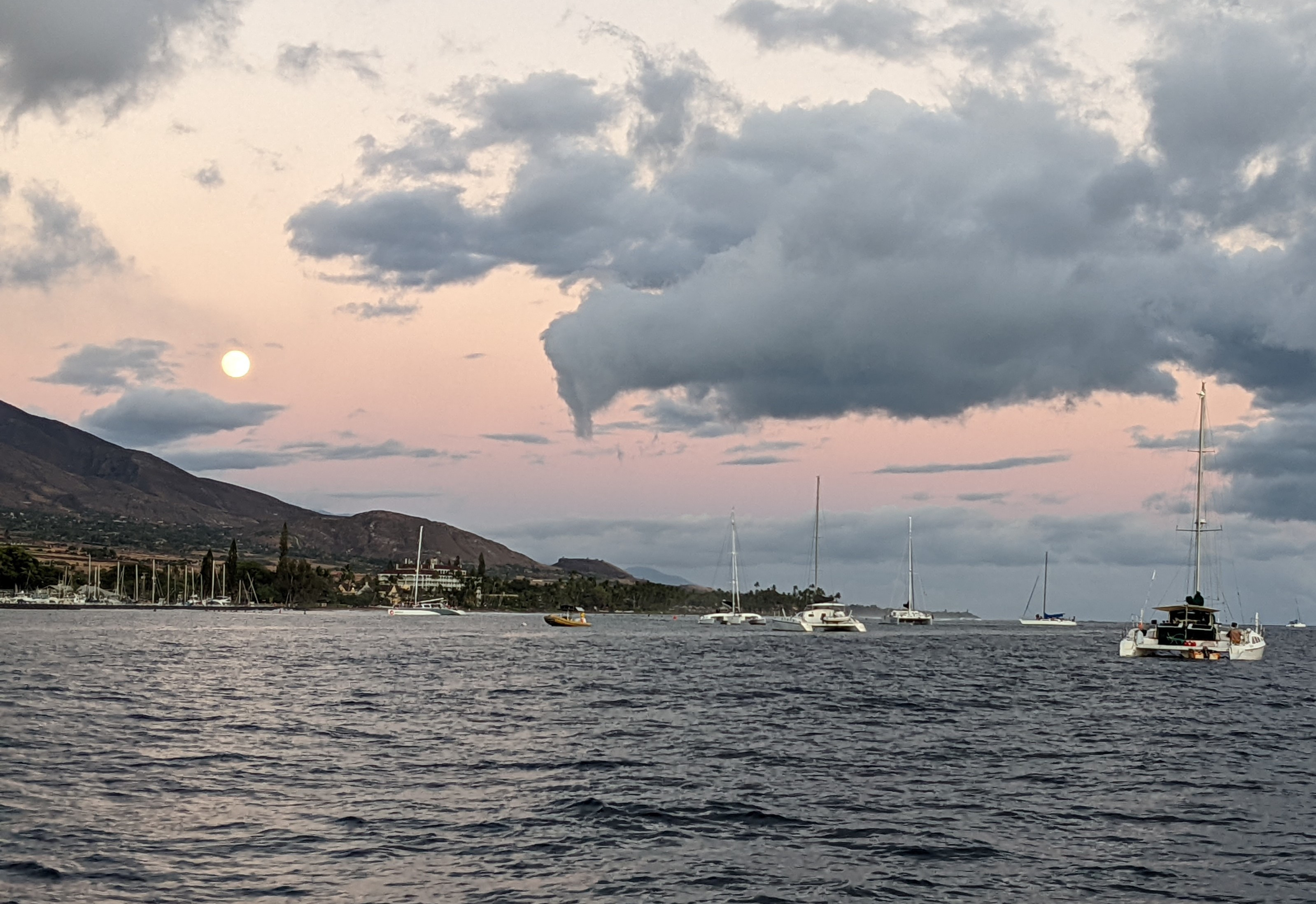
|
|
|
Windy thinks it rains in Lahaina frequently. I find their model's lack of resolution disturbing. The rain never quite reaches downtown or our mooring field.
|
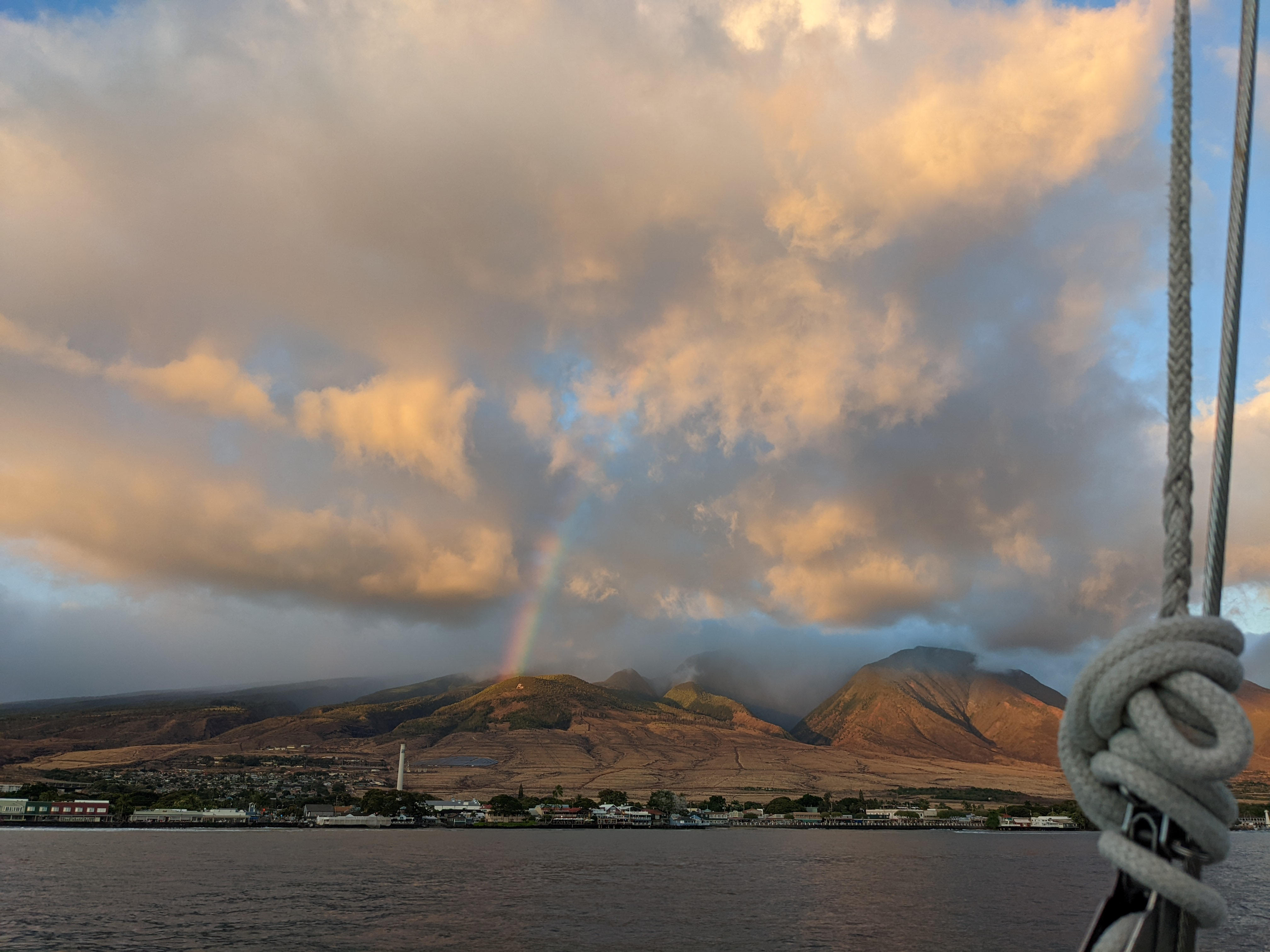
|
|
|
Boat repair in exotic locations - what a surprise! Our duck tape patch on the tricolor mast light had lost its stickyness. The answer? New Duck Tape!
|
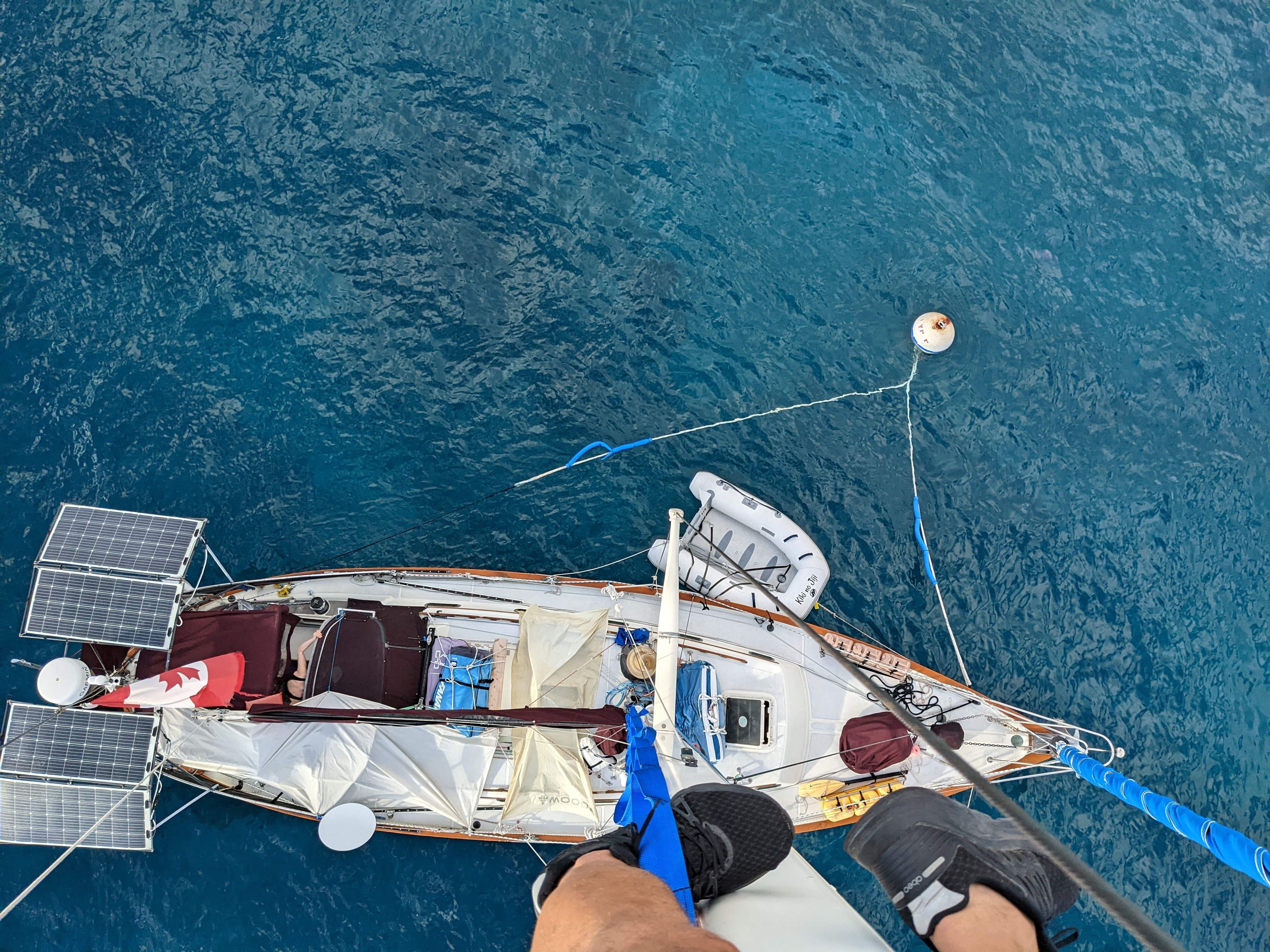
|
|
|
We had to do some windlass maintenance, opening up the clutch, cleaning and greasing it. The interwebs suggested a careful whack with a hammer as well.
|

|
|
|
We got much more reliable solar power in Lahaina than we had in Hilo on the windward side. Clouds pile up on the windward side and drop their water there. In Hilo, we actually had to run the engine once so the alternator could recharge the batteries, AND we had to ration our starlink use there! That really is a solar farm under the sunbeam :-)
|

|
|
|
This particular sunset was the evening after we arrived in Lahaina. The island of Lanai is on the left (WSW) and Molokai on the right (WNW).
|

|
|
|
Rounding the NW corner of Maui, we see Molokai ahead in the sunset as we begin to barrel down the wind-tunnel strait between. PredictWind and Clark led us to think we could get to Lahaina before dark... both were optimistic (as usual).
|
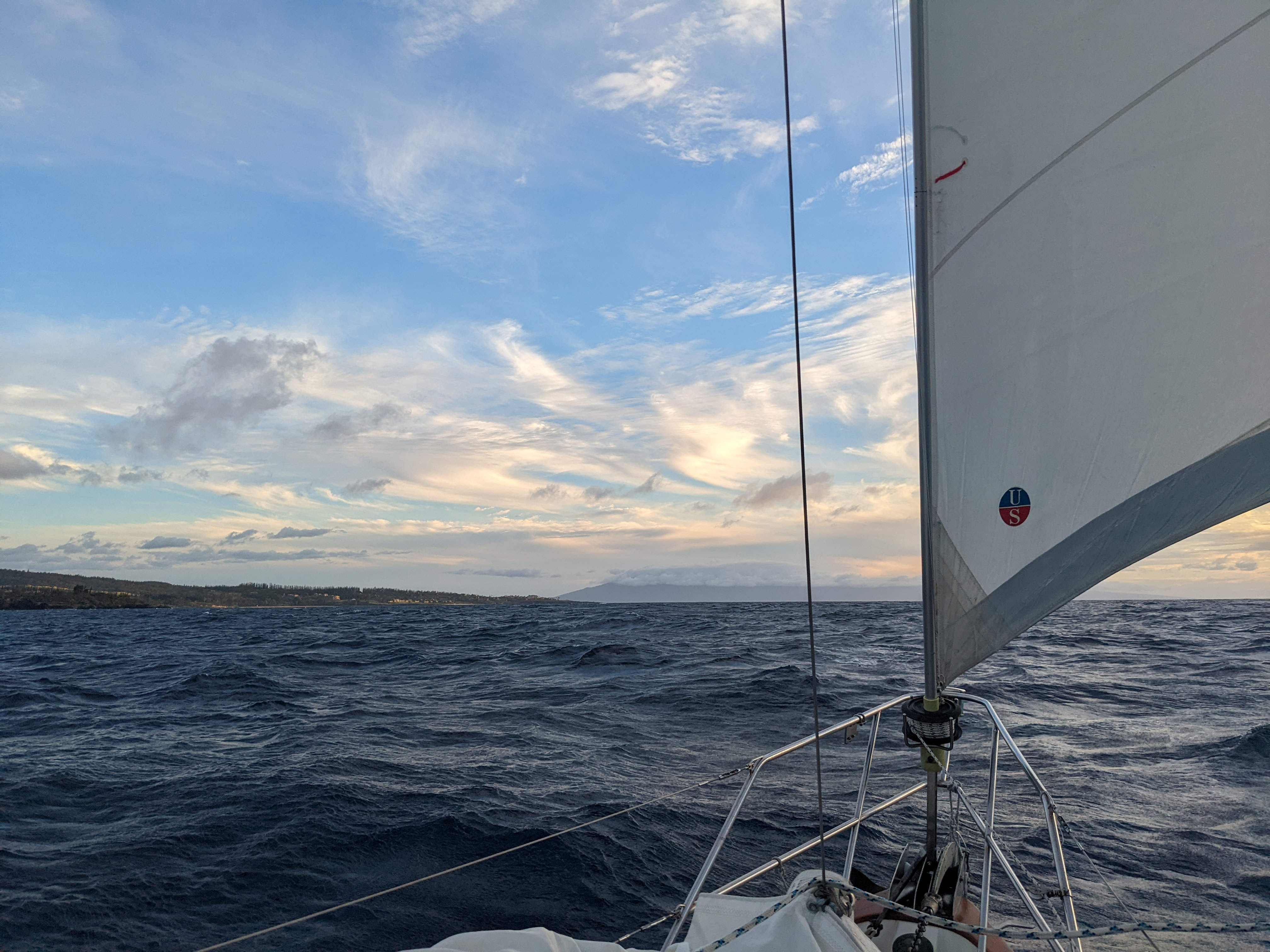
|
|
|
On the way to Lahaina, we got good views of both the controversial telescopes on Maunakea, and the older telescopes on Haleakala. You can barely see the latter in this picture :-)
|
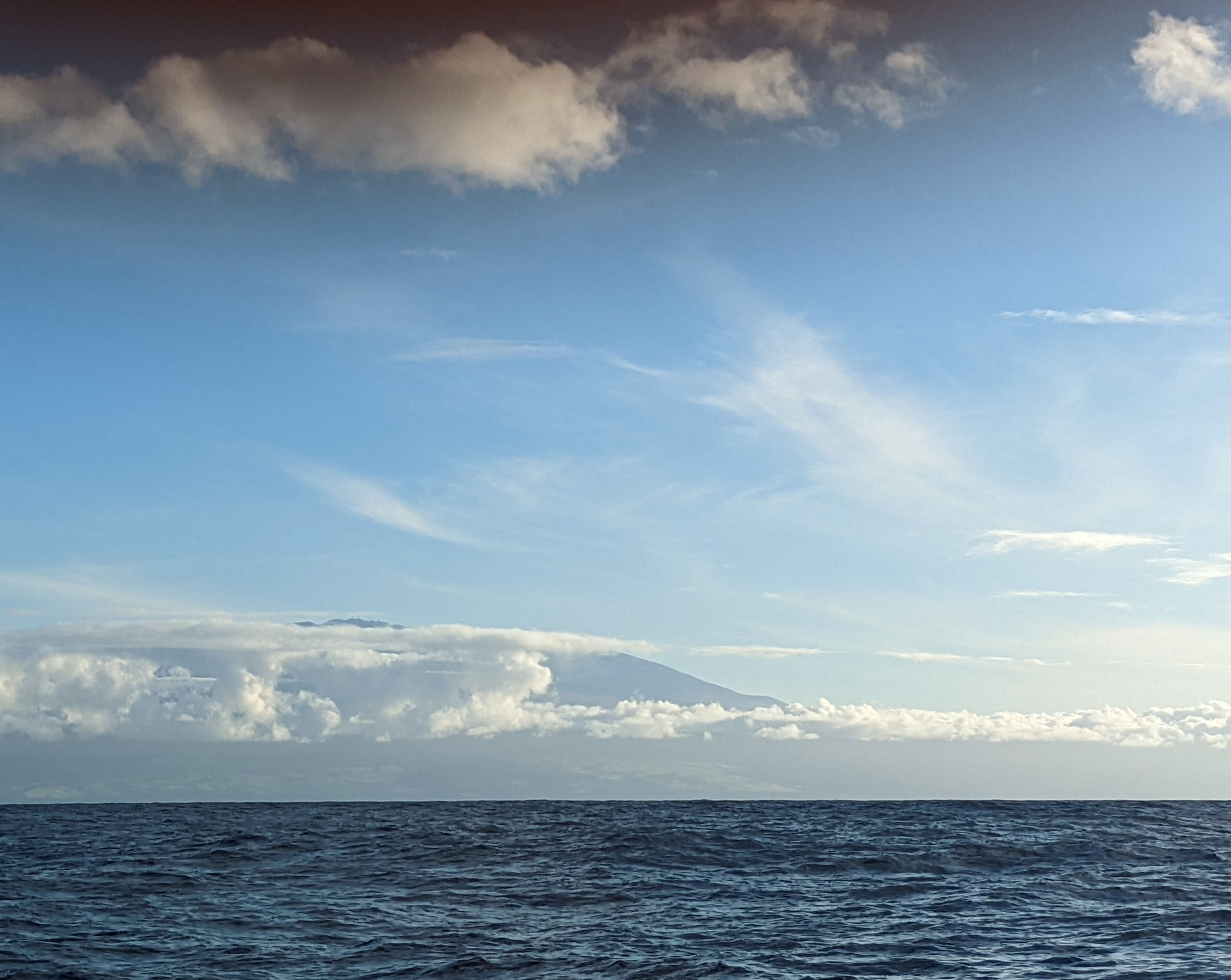
|
|
|
Captain Lizann pilots us out of Hilo harbour towards Lahaina.
|
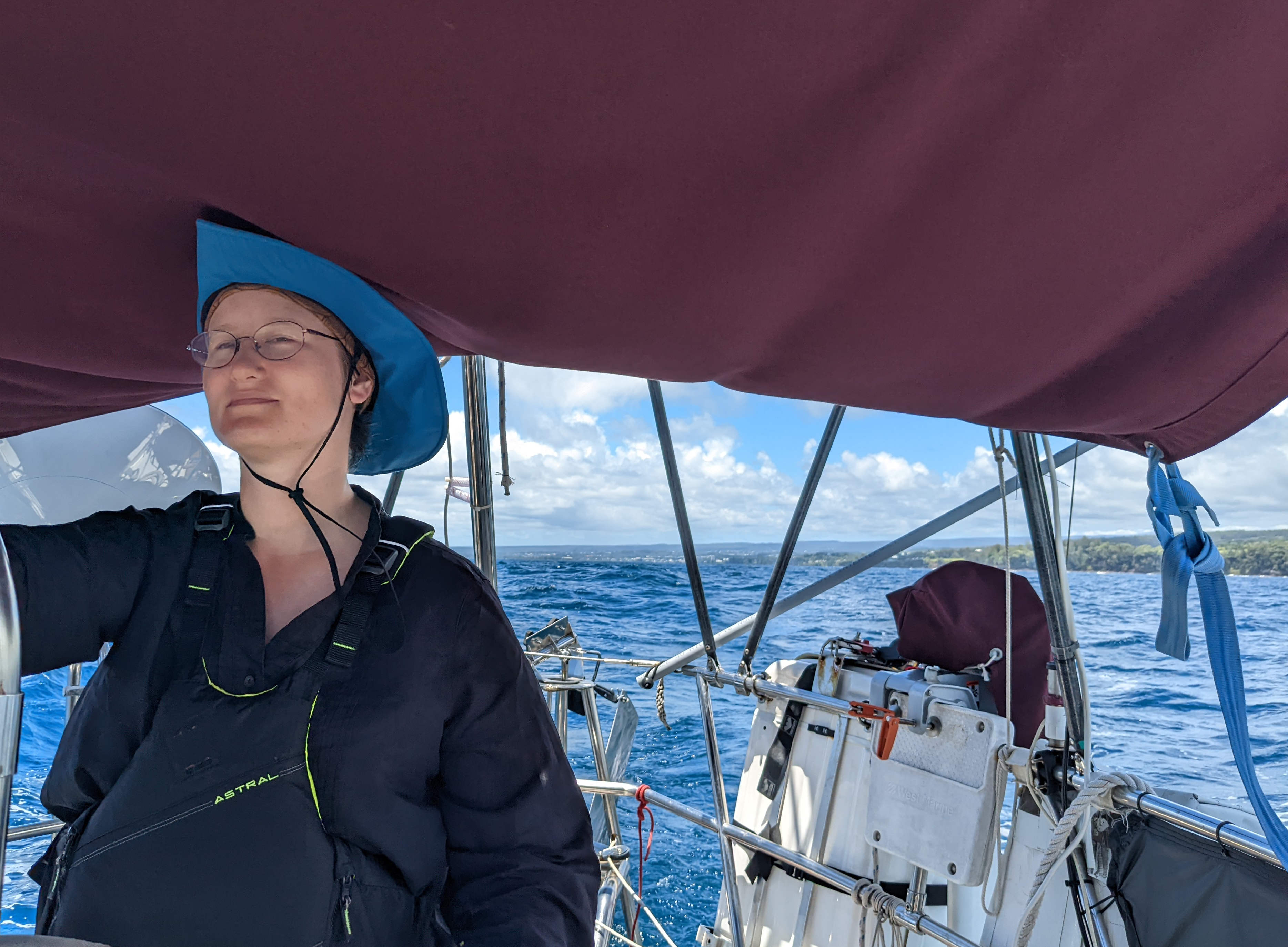
|
|
|
Captain Kiko paddled by Kiki in the Hilo anchorage and asked us if we'd like to sail on his yellow double canoe. Yes! He showed us how to sail with a traditional lee paddle and told us about the history of the area on the way.
|
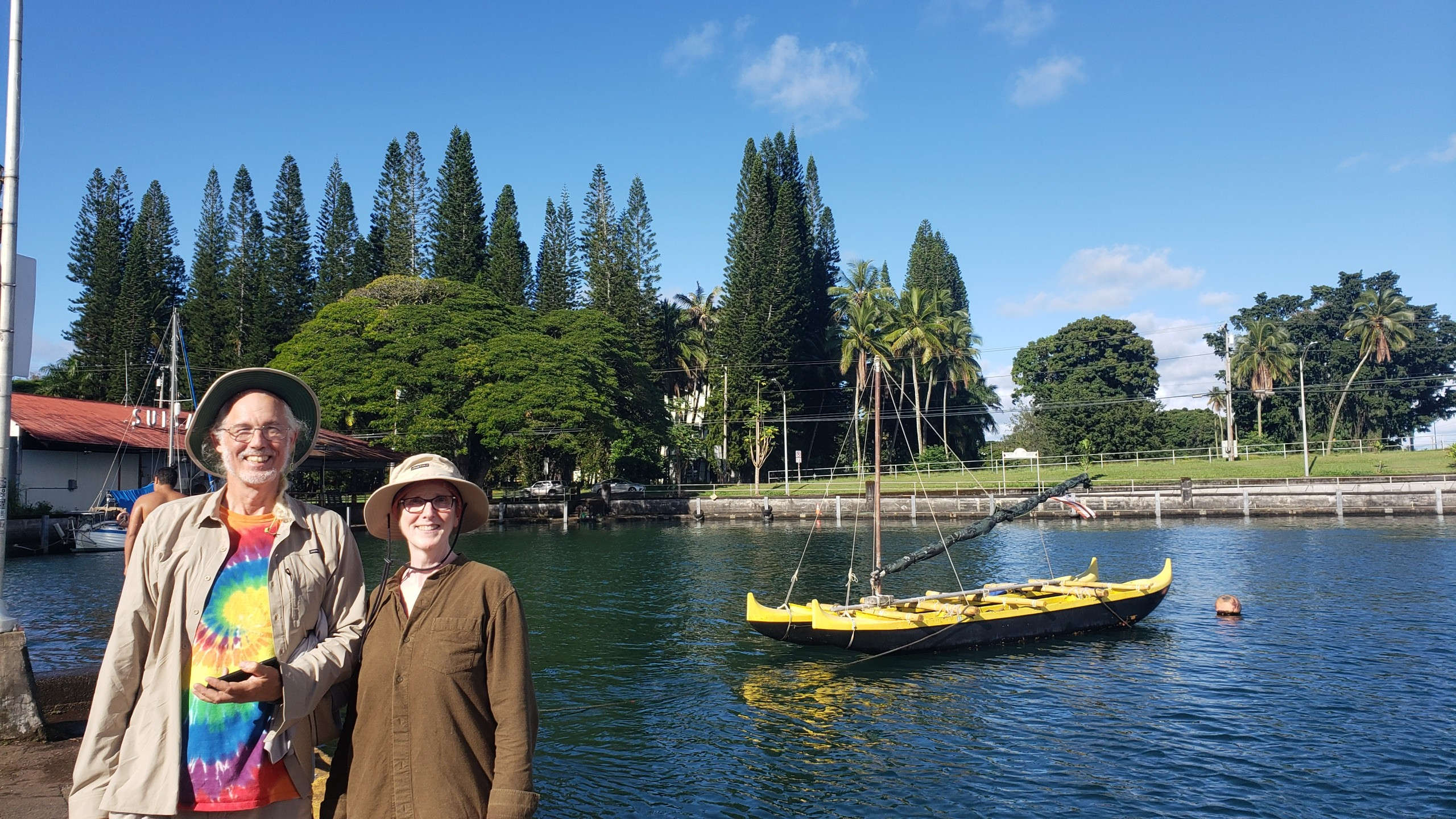
|
|
|
Boat repair in exotic locations continues. Our sail maker referred us to a Maui repair shop, who should be able to stop this badly-set grommet from chewing up our reefing lines. Even though it'll take us over a day to sail to Maui from Hilo, that'll be faster than commercial shipping would get our sail there - and there's no practical way to get the sail back to us in Hilo. The weather pushed us to Hawai'i, and now circumstances are sending us to enjoy several days in the Lahaina area :-) It's one of the few locations in the archipelago where we can see cruising boats anchored out in google satellite view.
|

|
|
|
Hilo has lovely parks for such a small town! Wailoa river park includes some impressive Banyan trees.
|
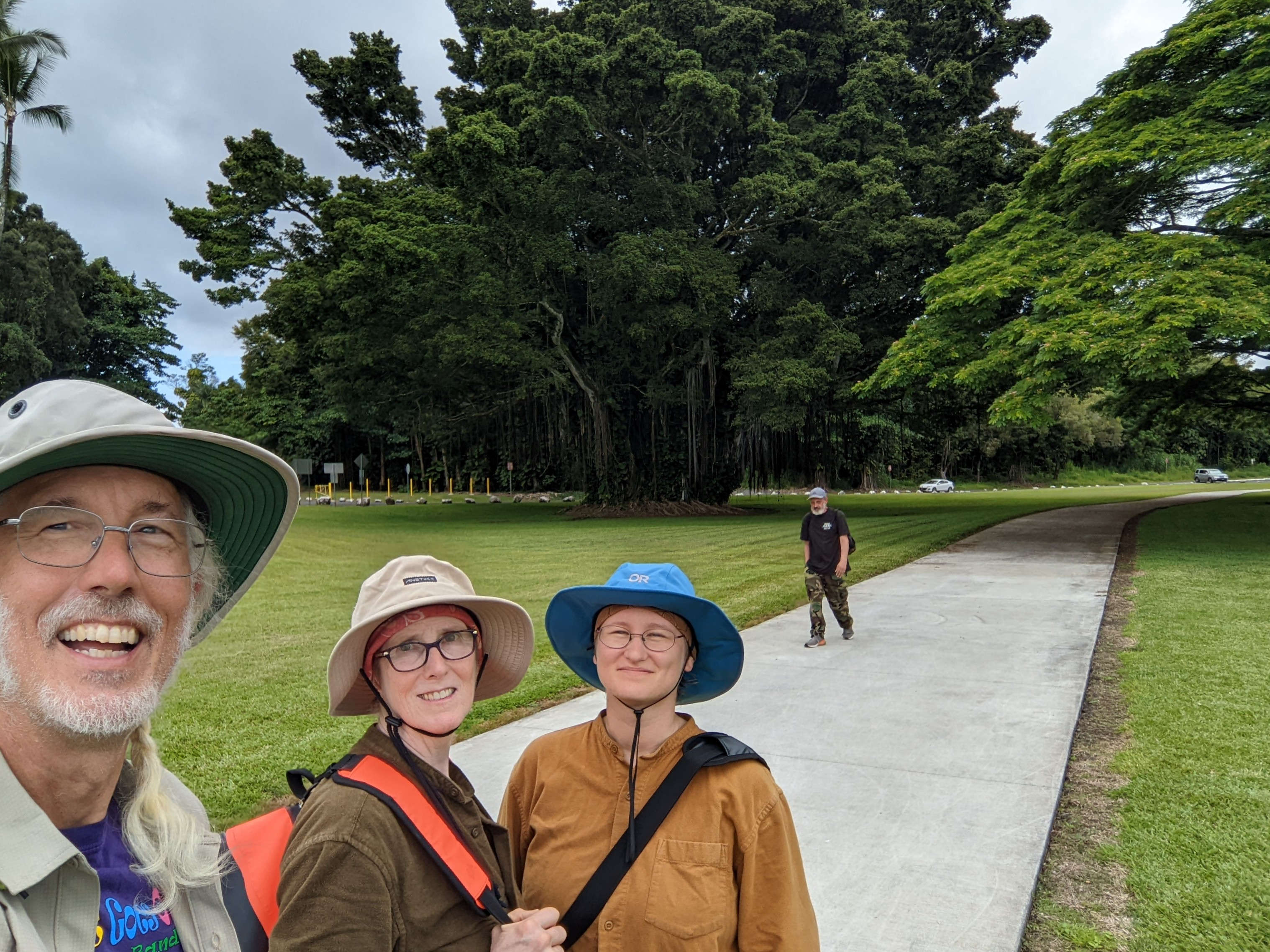
|
|
|
The mountain is always obscured by clouds. This is about the clearest view we've had so far up the slopes. Shot from our anchor spot in Reed's bay.
|

|
|
|
Ironically, this rock garden celebrates the independence bicentennial of the United States. We are told that Hawai'ians had stopped raising fish here before the area was turned into a park.
|

|
|
|
Yet another lovely spot in Hilo with an annoying stroad running through.
|
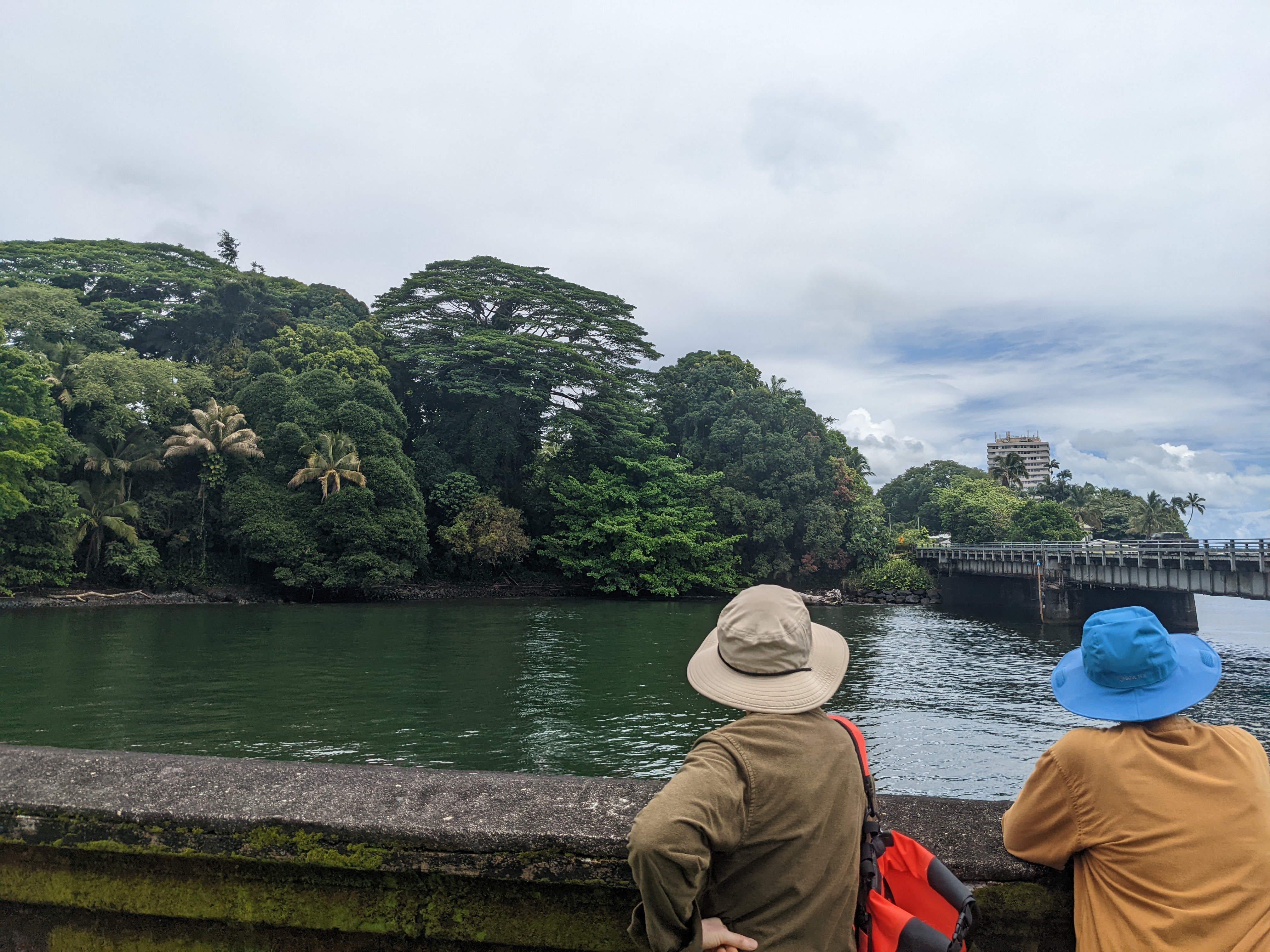
|
|
|
You may recall that we left San Diego towards Nuku Hiva (marked with the grey pin near the bottom right) For the first week (seven pins heading SSW) we motored or slowly sailed that direction. We started to consider fallback plans. Two things happened then: A couple tropical storms popped up near our course. Tazzy Rod - with whom we had left San Diego with similar plans - decided to detour to Hawai'i. For a few days, we sailed a course that got us closer to both Hawai'i and to Nuku Hiva. Then we decided that the weather would get us to Hawai'i much more reliably before our food ran out than it would to Nuku Hiva. We got to Hilo without even running out of corn chips!
Suva in Fiji and Papeete in Tahiti are possible next destinations.
|

|
|
|
Safely anchored in Hilo harbor. Our starlink satellite "portability" hooked us up with the bits, even though the archipelago is marked "coming soon" on the official map.
|
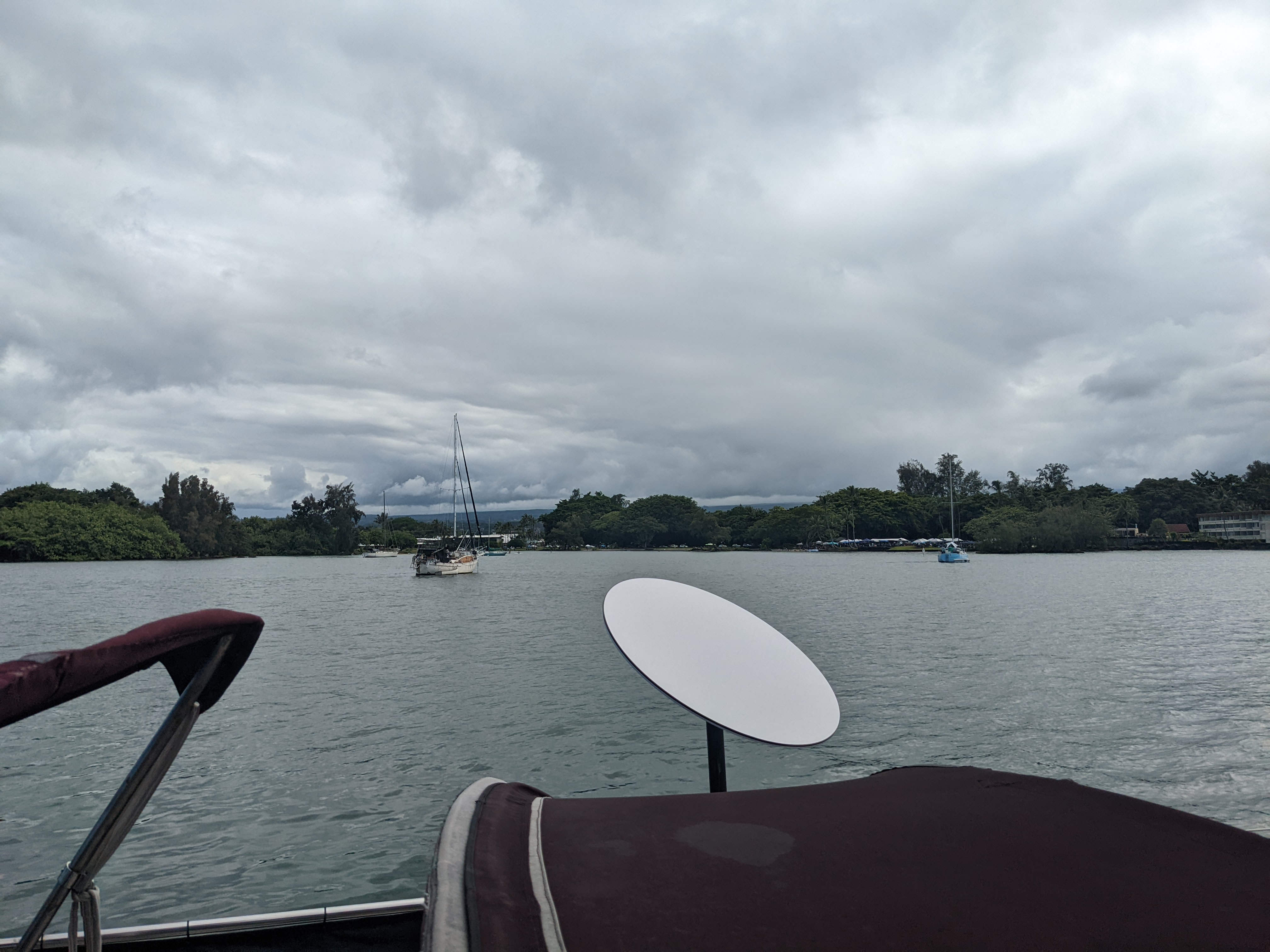
|
|
|
Just outside the breakwater, we found a couple outrigger canoe crews cooling off before paddling theor OC6's back to shore. We were under power, so we could keep up this time.
|

|
|
|
Our first view of Hilo, as we approach the bay.
|
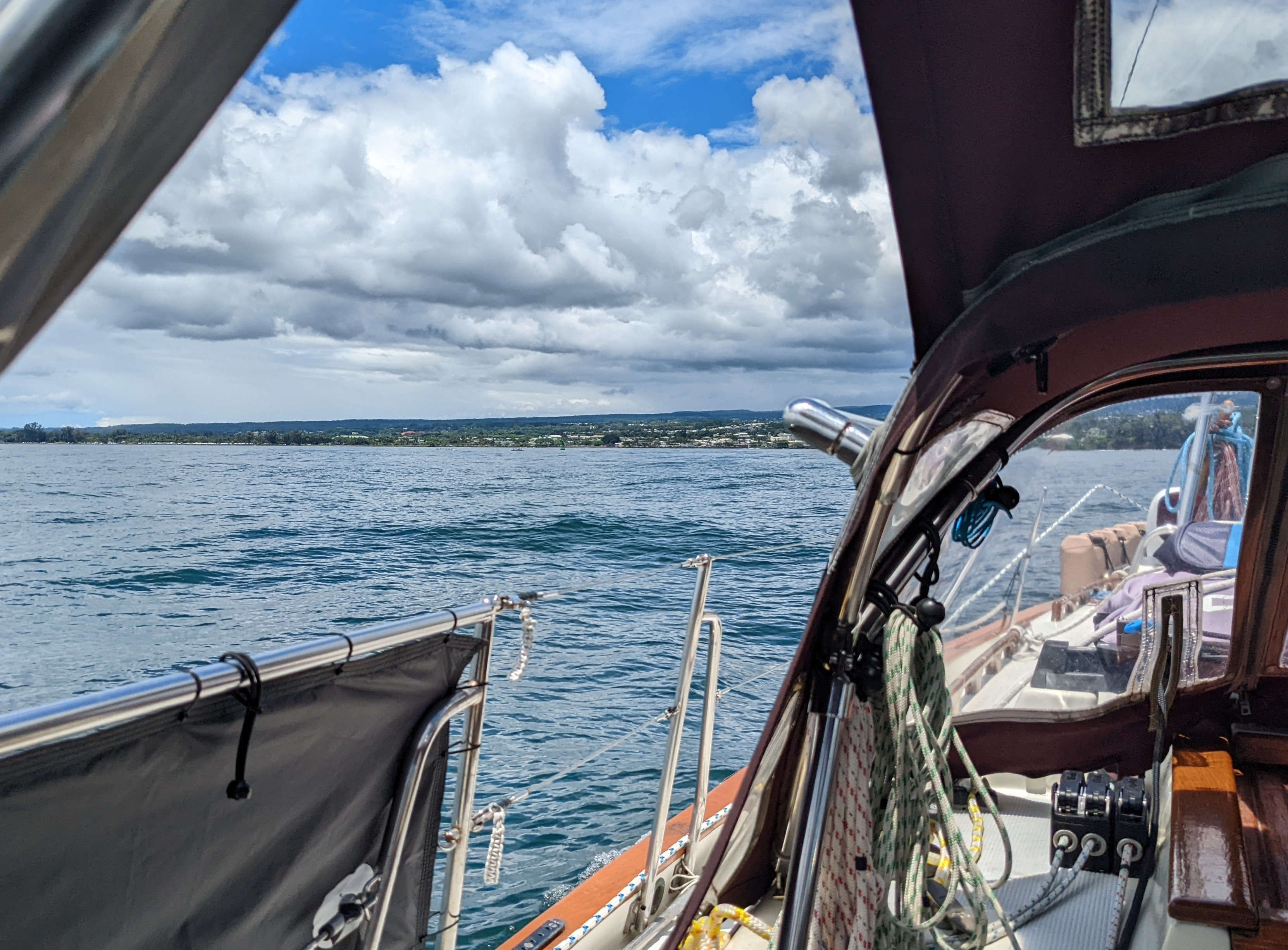
|
|
|
Hawai'i is justly famous for rainbows. You can see some of the Big Island off to the right of this one.
|

|
|
|
You are welcome to thank us for not posting a dozen more sunset pnhotos ;-) This sunset has Hawai'i hidden just behind it.
|

|
|
|
Two of us retained more trappings of civilization than Clark did, as we crossed the ocean.
|

|
|
|
After the spinnaker fiasco, we tried another downwind trick - twin headsails. These work better when the two headsails are closely matched. Our pair tended to wander off course unless we steered by hand.
|
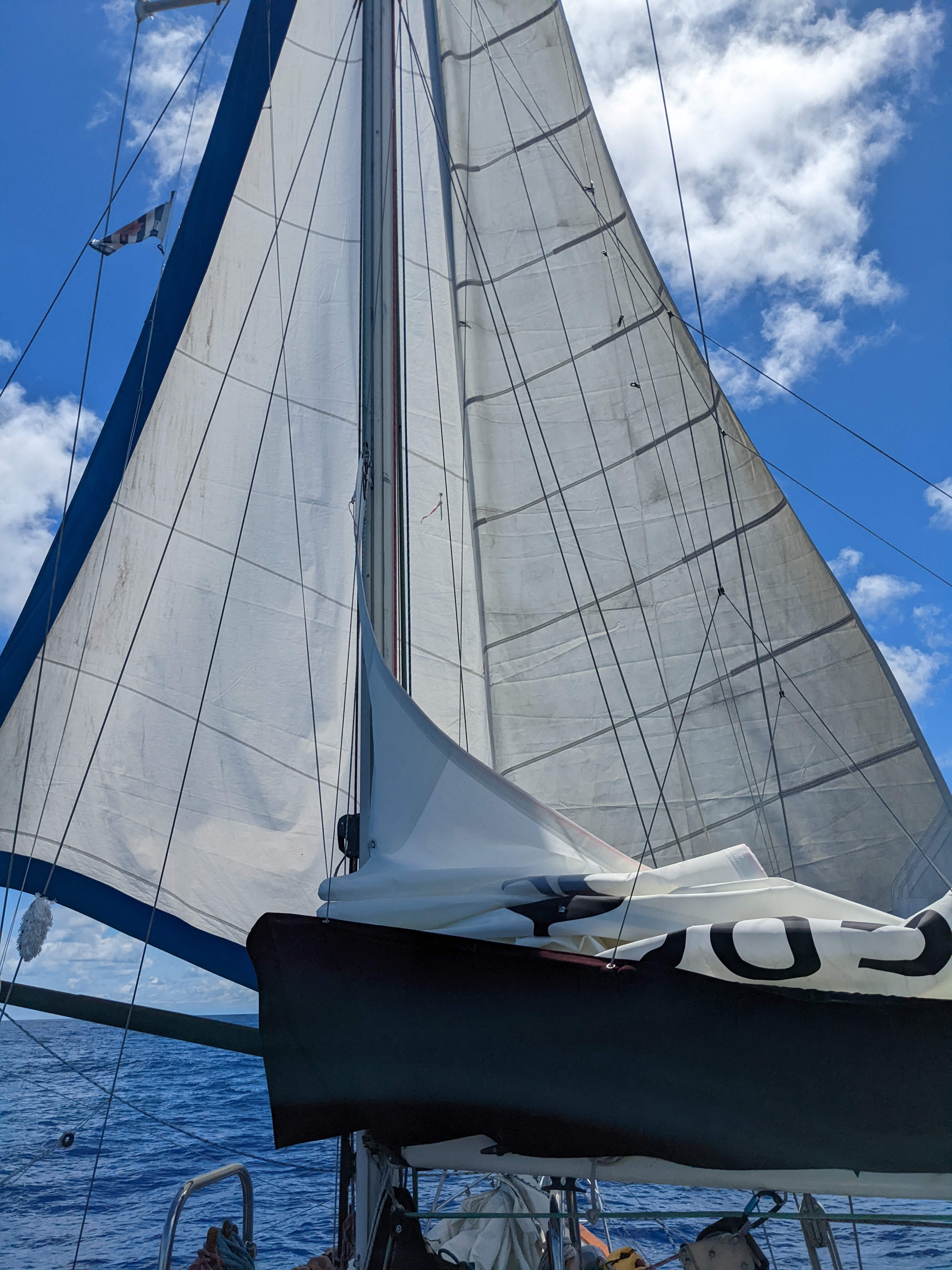
|
|
|
The captain tidies our port running backstay, framed by spectacular clouds.
|

|
|
|
We brought our project management skills to bear on the situation. On the right you can see our delightful gift from the Brewers - excellent bluetooth speakers with magic stereo.
|

|
|
|
Winds were light coming out of San Diego.
We raised the spinnaker which pulled us nicely down wind. The "sock" was sticky going up. Clark didn't realize that the loose string REALLY should have been tied to the sock to bring it back down. Ouch.
|

|
|
|
Anchored in San Diego downtown while we wait for more propitious weather. Part of yesterday's tour included leaving the "police dock" several nautical miles away, visiting this "cruiser's anchorage", motoring back out to the police dock area, finding that we could not continue to dock there, loooking at "free" anchorages that were packed for the holiday weekend, researching other posibilities, reading the fine print about other possibilities, driving back to the police dock to get inspected, finally just before sunset arriving once again at the cruiser's anchorage with a permit to be here.
|

|
|
|
We toured San Diego downtown by water. Two out of three of the tall ships in front of the skyline tour the bay under sail. We haven't seen the third one move yet.
|

|
|
|
San Diego has one of the busiest harbors we have experienced. I think this aircraft carrier is active; there's another one over by downtown that's a museum now. Lots of sailboats and party boats throng the waters, so we're elated that we are prepared with our flopper-stoppers.
|

|
|
|
Clark and Lizann cooperated on hardware and software to get messages in and out from the raspberry pi through the Iridium "Rock Block+". A soldered version of the breadboard circuit is now safely tucked inside our technical compartment next to the Raspberry Pi. The Iridium satellite technology is almost as old as the SSB modem.
|

|
|
|
Sculpture and the "Sally Ride" research vessel at San Diego's Shelter Island. I remember seeing the "Sally Ride" way up the coast when we were coming down. San Diego is a busy town built around a world-class bay; this sculpture is just the most convenient artwork in this "Friendship Park"
|

|
|
|
We say sayounara to Avalon. Comically, we shortly decided that we did not have enough fuel to get safely and quickly to San Diego, so we turned around and filled our tank back at the dock next to the Casino. We were in a hurry, as weather forecasts told us that quick departure for the south seas could lead to a fast and safe trip. Again, you see one of the cruise ships that triple the local population every few days.
|
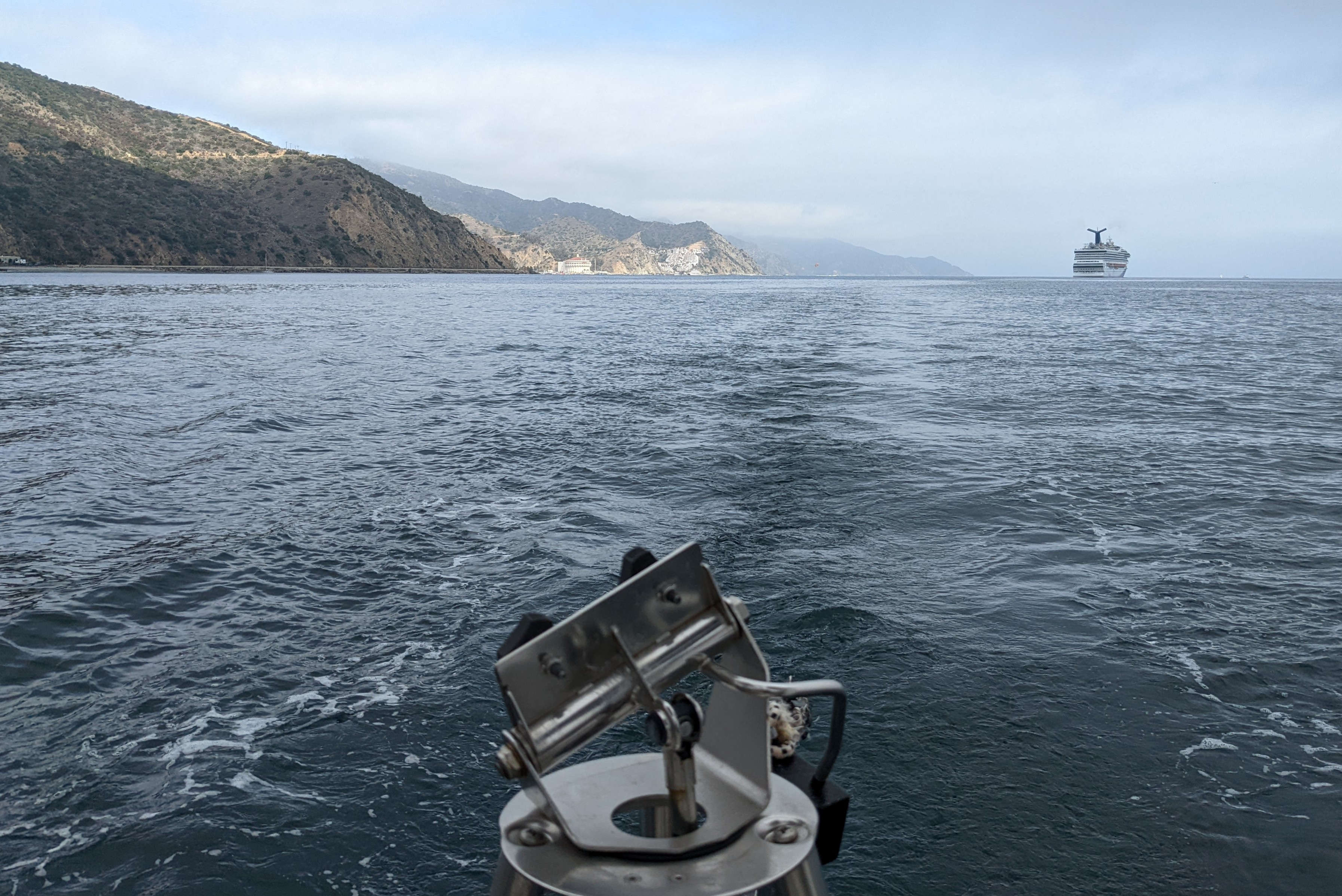
|
|
|
After heroic efforts, Lizann got the Winlink software to send and receive digital messages over the HF radio. This SSB technique uses narrowband channels designed for voice to carry a couple thousand bits ber second. When the fricking ionosphere cooperates. This decades-old technology often works from anywhere on the ocean to the interwebs on land.
|

|
|
|
Part five of essential systems: medical supplies for people who plan to be more than 24 hours from a hospital. Brooksie somehow managed to cram hundreds of dollars of first aid into Kiki's already-full storage nooks and crannies.
|

|
|
|
This is the last shot of Santa Barbara for quite a while. Forrest, Kathy, Will, and Gill have been life-savers for us and Kiki over and over. Our thanks and love overflow.
|

|
|
|
Brooksie and Clark finish off another adventure in stainless. A half-inch bolt galled and siezed to the point where we had to hacksaw it to finish the secure mounting of our new anchor (out of frame).
|

|
|
|
Bolts, caulk, gaskets, and stainless bridging plates all installed! Two 150 liter tanks, and another hundred liters of backup should be enough to get us to Polynesia with safety margin to spare. This aft water tank has been one of our longest projects so far.
|

|
|
|
We got the new mainsail installed, after installing reinforcement panels to protect against chafe on the spreaders. Lizann shows off the "Crealock 37" logo and hull number.
|
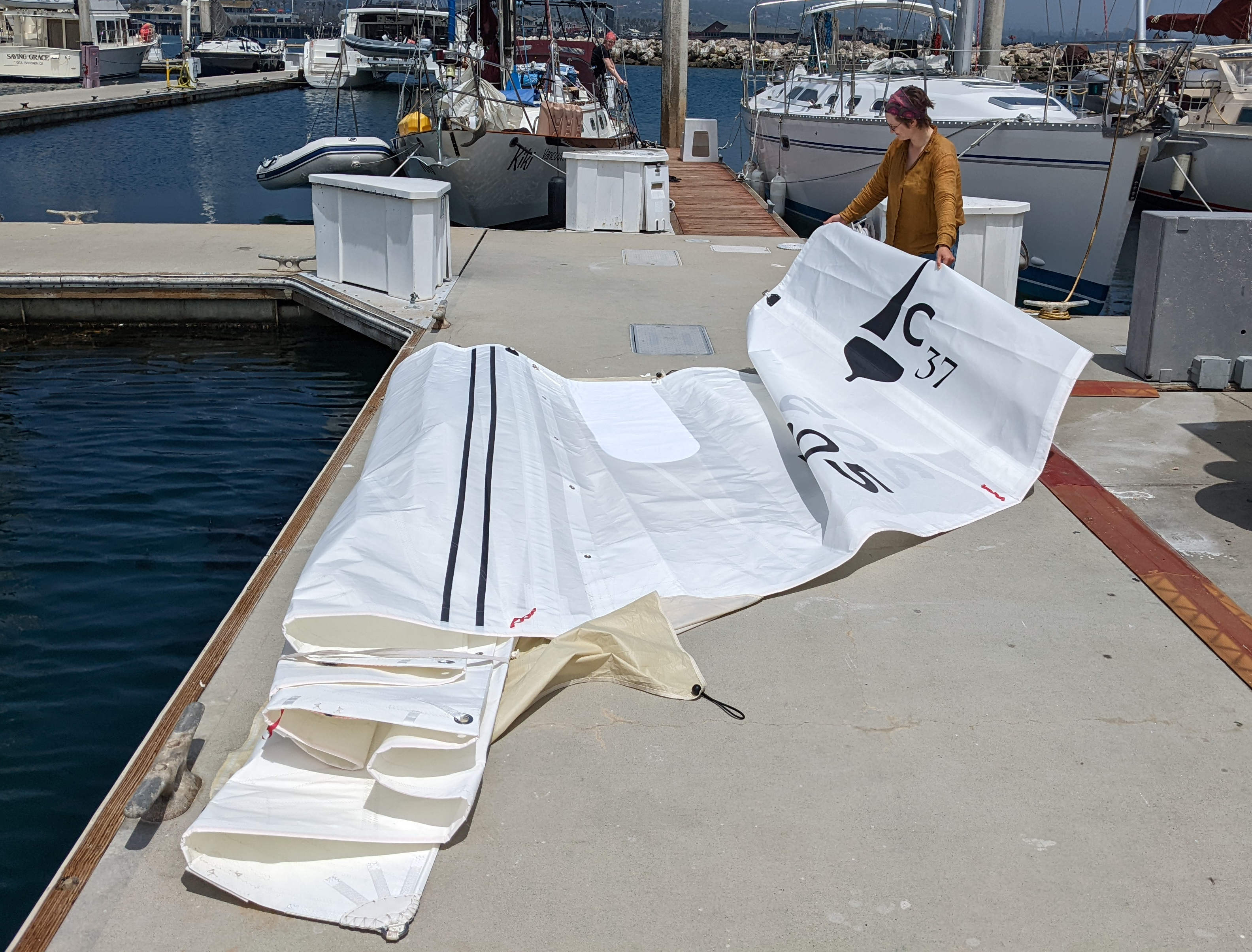
|
|
|
While we were fixing up Kiki for ocean crossing, her sister-ship sailed up and docked next to us. Dennis was very friendly with advice, helping hands, and delicious food. Dennis and family have sailed her to New Zealand, Hawai'i, and back to California :-)
|

|
|
|
Part four of four essential passage systems: HF radio. Brooksie is cleaning and repairing the high voltage connection to the electrically-isolated section of the backstay that serves as Kiki's antenna. HF can travel over the horizon by bouncing off the ionosphere, so it provides communication far at sea.
|
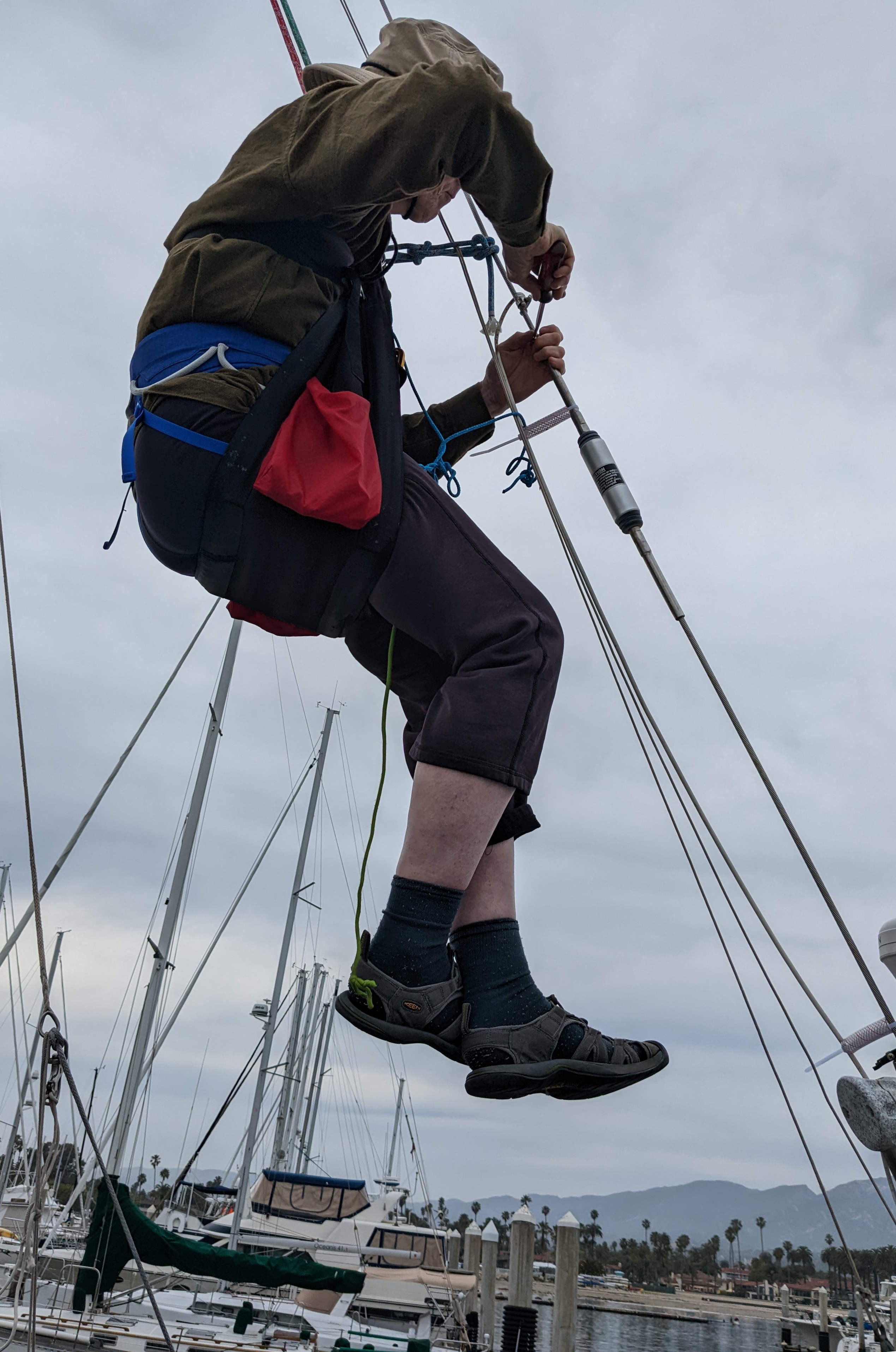
|
|
|
Part three of four essential bluewater systems: storm-ready ground tackle. This shiny Mantus M2 is rated to hold Kiki against a strong gale. It sets and holds better than our old anchor.
|

|
|
|
Lizann pilots Kiki away from Avalon, on the way back to Santa Barbara. We ended up hitting eight knots, and zero knots speed on this hundred mile sail.
|
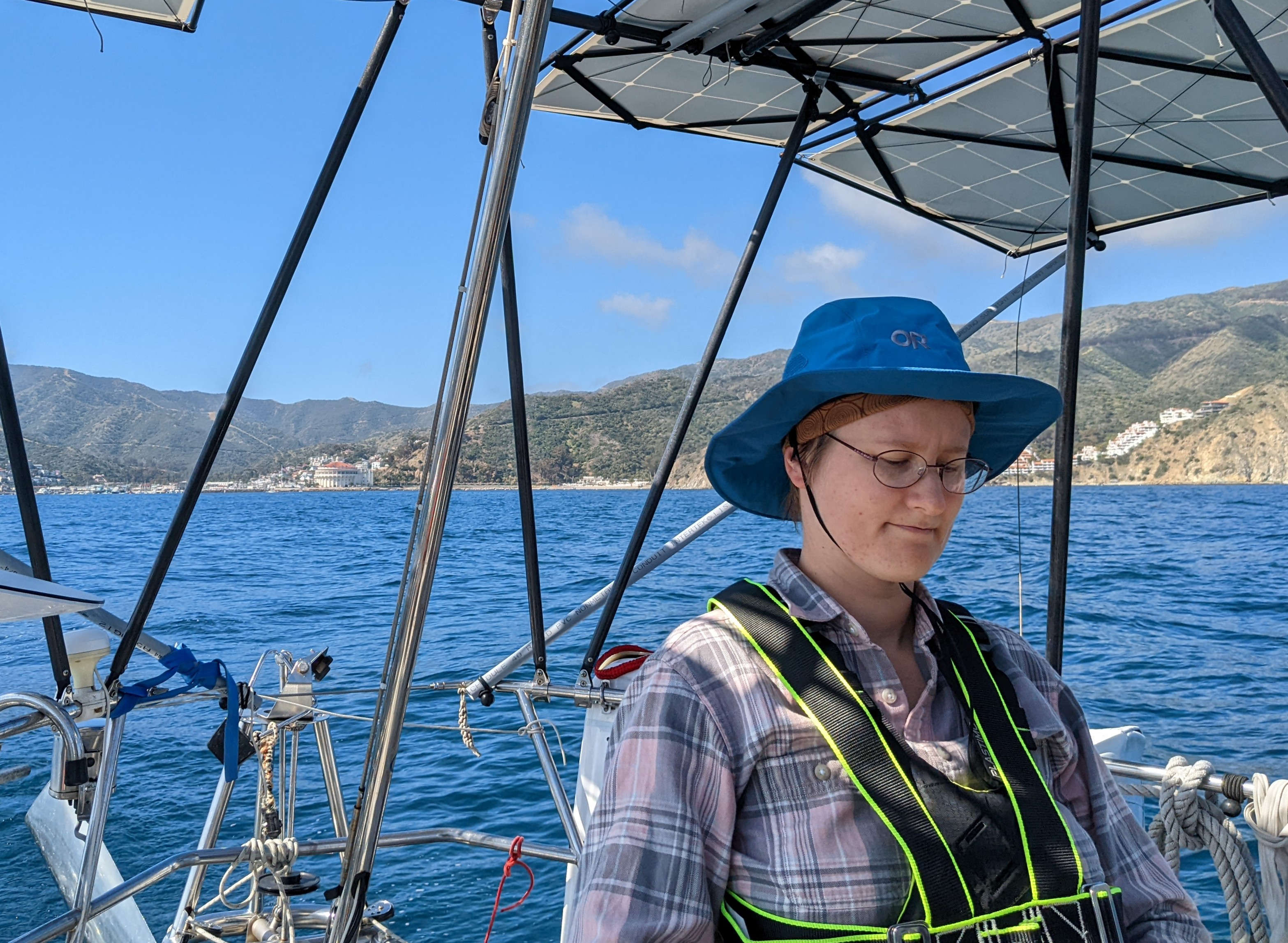
|
|
|
Lizann and Brooksie row Jiji across Avalon harbor to one of the dinghy docks for a shopping trip. Our outboard is in fine fettle; we decided that such a short trip in protected harbor was healthier and more fun under our own power.
|
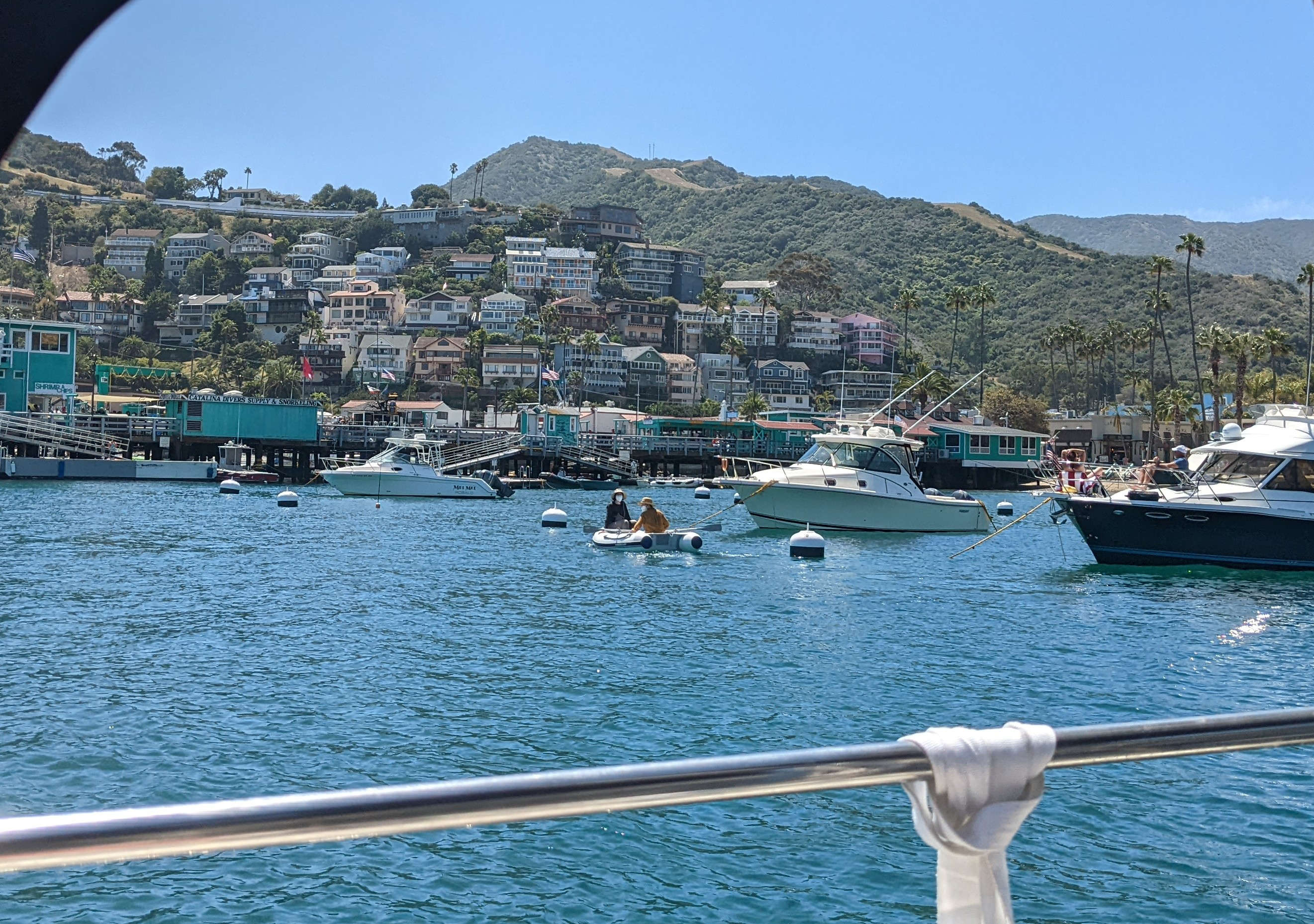
|
|
|
Part two of four essential offshore systems: enough drinking water. For the last year, we have been filling this tank only 3/4, to minimize water escape through the poorly-sealed lid. Now we have scraped off the old caulk, filled the old screw holes with thickened epoxy, and tapped many new bolt holes into the fiberglass lip.
|

|
|
|
Part one of four essential systems for offshore sailing: VHF radios. The handheld one in the foreground is handy for basic function check of the high powered VHF on Kiki, in the distance somewhere over Clark's thumb.
|
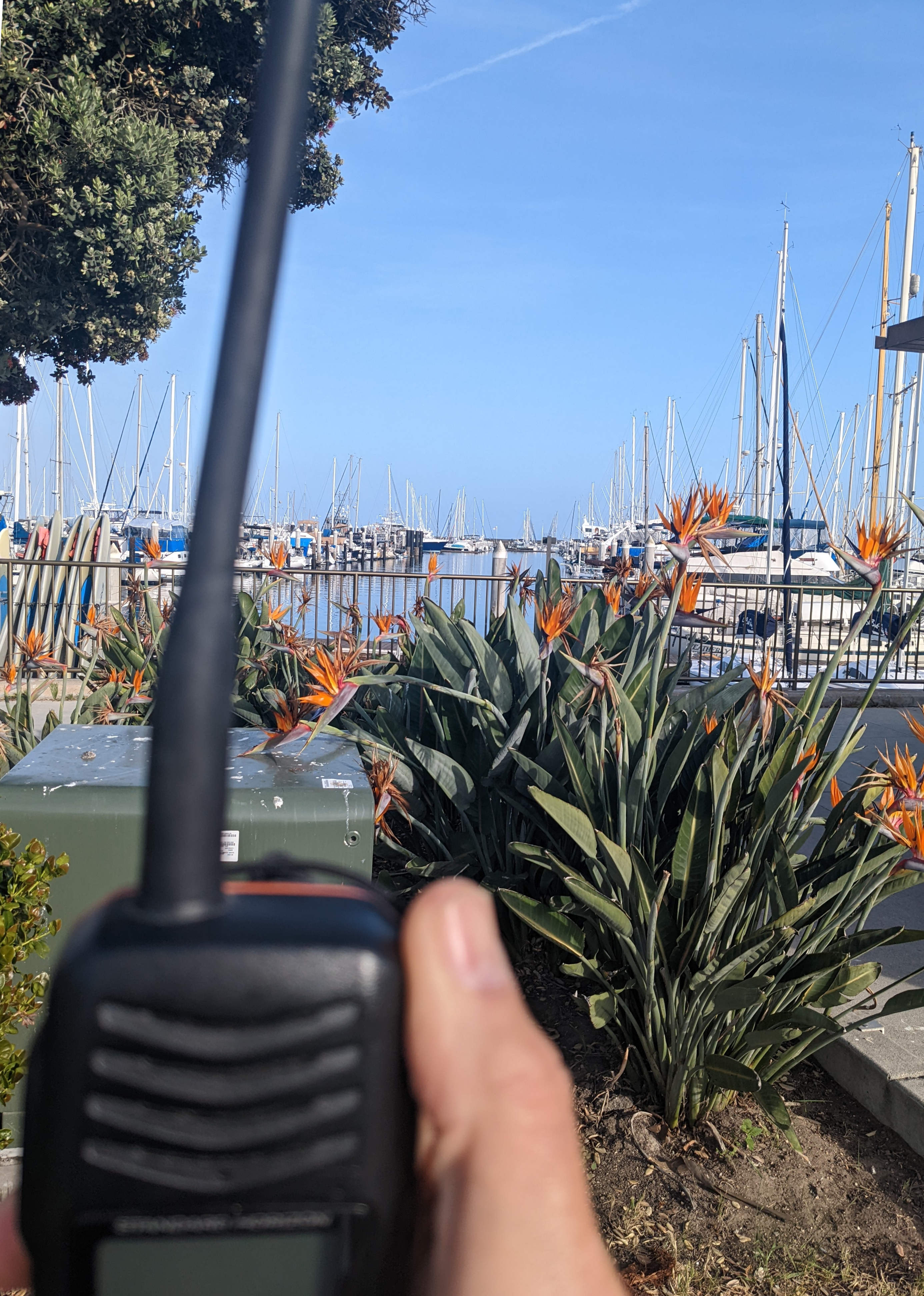
|
|
|
Lizann has made huge strides in bringing our infrastructure into the 21st century. NextCloud boots on our Raspberry Pi 4, and connects to one of our linux laptops. OpenCpn also runs on the Pi, delivering a comfortable open source redundancy to Kiki's bespoke navigation aides. (Experienced cruisers tell us "two is one, and one is none")
|

|
|



























































































